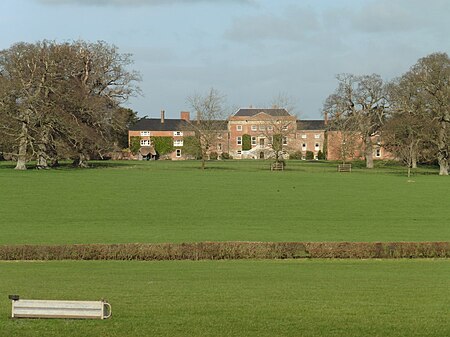Earnshill House
1725 establishments in Great BritainGrade I listed buildings in South SomersetGrade I listed houses in SomersetHouses completed in 1725

Earnshill House in Hambridge, near Curry Rivel, Somerset, England is a manor house, set in parkland. It was built in 1725 for Henry Combe, a Bristol merchant by John Strachan. It has been designated as a Grade I listed building.
Excerpt from the Wikipedia article Earnshill House (License: CC BY-SA 3.0, Authors, Images).Earnshill House
Hundry Lane,
Geographical coordinates (GPS) Address Nearby Places Show on map
Geographical coordinates (GPS)
| Latitude | Longitude |
|---|---|
| N 50.991944444444 ° | E -2.8769444444444 ° |
Address
Hundry Lane
Hundry Lane
TA10 0BB , Hambridge and Westport
England, United Kingdom
Open on Google Maps









